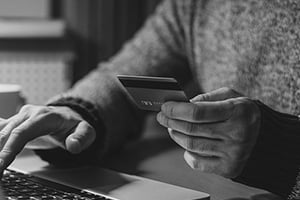

Business owners can reduce their risk of getting scammed if they understand their company's vulnerabilities and recognize red flags.

A company's life expectancy increasingly depends on its owner's vigilance in protecting its cyber presence. Learn industry best practices that business owners should implement..

Cybercriminals are here to stay, but with smart thinking and a plan, you can help safeguard your business. Seacoast is here to help with solutions for payroll, banking and more.

An example of a B2B scam is a fraudster sending an invoice for a business listing. Except payment goes to the fraudster and the listing never exists.
Contact us if you suspect fraud on your account(s) or you responded to a suspicious email, text message, or phone call.